Table of Contents
- Why and for which structures the waterproofing is necessary, suitable for application on metal
- Types of materials for metal waterproofing, their characteristics, and advantages
- Prices for the performance of works on waterproofing of metal structures
- Order work on applying waterproofing to metal
In modern construction, the use of metal as the main material for the construction of certain types of structures is widespread. Metal frames, elements, and coatings are found in domestic, commercial, and industrial construction, so the question of how the waterproofing of metal and metal structures is carried out is extremely relevant today. How to solve the problem of protecting a product subject to corrosion and intensive destruction from the effects of moisture and precipitation?
Why and for which structures the waterproofing is necessary, suitable for application on metal
The characteristic features of metal as a building material make it an almost unique tool for housing construction and not only. For example, roofs, pipelines, tanks for various purposes, machine parts, and other factory equipment are made of it. What advantages does metal have in comparison with other materials? These include:
- Resistance to critical mechanical loads;
- Ability to withstand high pressure;
- Resistance to environmental temperature influences;
- Consistency of material properties regardless of its operating conditions.
And yet, despite the fact that metal is such a reliable and durable material, it is necessary everywhere to provide high-quality protection from moisture that can destroy the product. The most unusable metal to moisture is considered to be low-carbon steel, from which screws, bolts, nuts, studs, and other products with low strength and high ductility are made.
Since chemical processes that lead to corrosion begin in contact with water in the thickness of the metal, it is important to carry out waterproofing of metal structures at the stage of their construction. Parts of buildings located on the ground are particularly susceptible to destruction. This is due to the fact that they are negatively affected not only by moisture but also by biological and chemical products contained in the soil. That is why, in order to avoid the partial and then complete destruction of metal structures, waterproofing is used.
Let’s talk about specific types of structures that need waterproofing treatment.
- Metal roofs
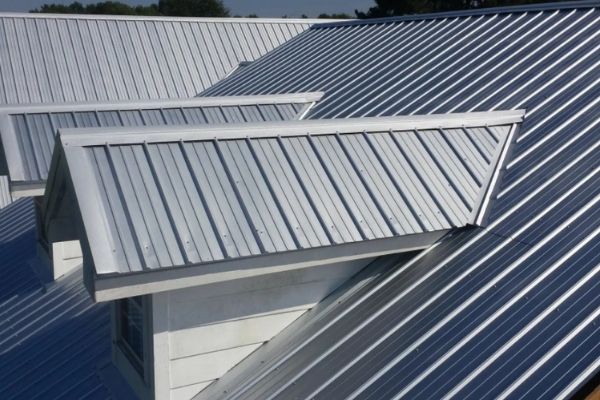
The roof of apartments and private houses, no matter how tightly and qualitatively it is laid, does not protect the room from moisture ingress. Fixation points and overlaps at the joints – are the weak points of the metal roof, which over time will turn into voids capable of passing water through themselves. However, from the inside, moisture does not evaporate as easily and quickly as from the outside but only leads to the gradual destruction of the material. Moreover, the insulation of a porous structure, usually mounted on the roof, absorbs moisture and prevents its evaporation from the inner surface of the roof, and this, in turn, provokes corrosion of the material.
It is for this reason that the metal roof needs protective treatment. The waterproofing material repels the liquid so that it flows off the roof without affecting either the insulation or the inner surface of the roofing sheet. This allows you to preserve, among other things, the thermal insulation properties of the insulation, so that not only moisture but also sold air does not penetrate into the room.
You can read more about the waterproofing of metal roofs in the article – “Waterproofing of metal roofs”
2. Metal tanks

Metal tanks in which pure freshwater or various technical liquids are stored also tend to collapse under the influence of liquid. Metal corrosion in this case can lead to deterioration of the quality of drinking water, as well as to the formation of cracks in the tanks and, as a result, the appearance of leaks.
Therefore, the tanks are subjected to waterproofing, the material for which is selected individually for each project. The selection criteria are the size, shape, type of construction, type of liquid acting on the metal, and type of material of a specific container. Most often, various organic materials are used to protect clean water from metal corrosion products, which will be discussed a little later.
Properly made waterproofing of metal tanks allows you to preserve the useful properties of water, avoid the destruction of the metal structure, as well as increase the resistance of the material to temperature influences.
You can read more about the waterproofing of metal tanks from metal in the article – Waterproofing of tanks.
3. Metal pipes
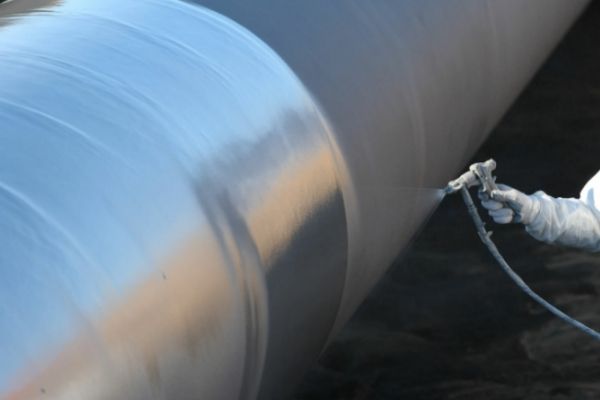
Pipeline elements that are constantly in contact with water should ensure the complete safety of water from corrosion products and other harmful substances since it is this water that provides one of the main needs of the population. The state of health and well-being of citizens directly depends on its quality.
For this reason, all pipes at the installation stage are sealed with modern materials, such as polymer compounds, polyurea, PU foam, and some others. Thanks to high-quality processing, the service life of the pipeline elements increases, as well as the risk of structural failure and other unforeseen circumstances are eliminated.
High-quality waterproofing not only prolongs the service life of any structure, but also significantly reduces, and in most cases completely eliminates the risk of accidents. Waterproofing of metals and metal structures can be performed using painting, pasting or coating technologies.
Types of materials for metal waterproofing, their characteristics, and advantages
The materials with which the waterproofing of metals and metal structures is carried out vary depending on which particular structure is being processed. Let’s consider the most common materials for each of the above types of metal structures.
Sealing tapes

Waterproofing of joints and various seams of underground and surface structures is carried out by various methods.
One of such methods is the installation of special sealing tapes of various types: polyvinyl chloride, polymer, heat shrinkable, and others.
- Polyvinyl chloride tapes – used, as a rule, during repair work. With their help, damaged sections of pipes and their connections to a particular structure are restored.
- Polymer tapes – are made of fluoroplastic and refer to self-adhesive materials. They are designed to protect threaded pipe connections from leaks. Installation is carried out by repeatedly winding the tape on the threaded section to be processed.
- Heat shrinkable tapes – consist of polyethylene and a melting layer and are used for waterproofing welding joints of pipes. They are installed by heating the molten layer.
- Rubber – famous for high strength and elasticity, as well as long service life, is used for waterproofing pipes in the basements of residential buildings. Installation of this material is relatively easy, and its resistance to the effects of any oils, acids, and other chemicals compensates for its disadvantages, for example, the inability to tolerate heating above 50 degrees Celsius.
Bitumen coating materials

Bitumen mastics used in the construction of various kinds of facilities also provide waterproofing of metals. The double-component composition includes bitumen itself with the addition of polymeric substances that ensure the strength and elasticity of the material. At the moment, the coating technology is not suitable for all operating conditions, therefore, an innovative bitumen composition is being developed that can withstand being in absolutely any conditions.
Underground reservoirs, especially those located in soils with high groundwater levels, need increased protection from moisture. In this case, the so-called “heavy” waterproofing is used, implying the use of bitumen material.
The use of such materials, as a rule, goes as follows:
- Preparation of the base, it’s cleaning from corrosion, rust, dirt, and dust. If the structure is not subjected to waterproofing for the first tie, then the remnants of the previous material should be first removed from it;
- The metal is treated several times with a bitumen-based primer;
- After priming, a layer of bitumen material is applied to the work surface;
- The next layer of the material is applied strictly after the previous one has been dried.
The unique performance characteristics of the material, as well as the number of layers, are determined by the level of groundwater impact on the material. In the case of moderate underground humidity, metal structures are treated with the previously described bitumen mastic in two layers.
You can read more about bitumen waterproofing in the article –Bitumen waterproofing: types, characteristics, and technology of the installation.
Polyurethane materials and polyurethane paints
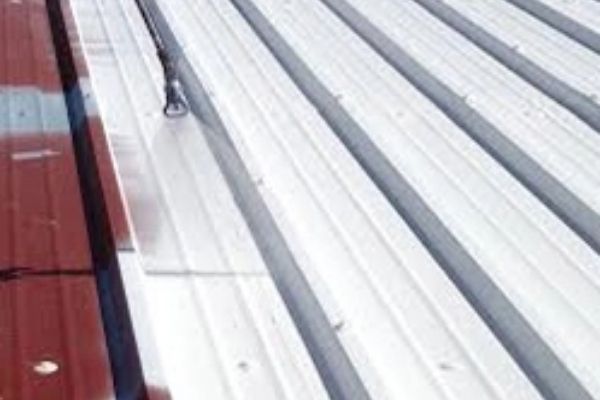
Another common method of waterproofing metal is its coating with various polyurethane compounds. The coating system of metal waterproofing involves the application of viscous material to the metal, the thickness of which usually does not exceed 2 mm. this technology is used, for example, to protect the roofs of private houses and cannot be used for waterproofing pipes or tanks located underground. Such surface treatment includes the use of liquid and viscous substances. This method is characterized by the relative ease of installation, low cost of materials, and ease in the preparation of building mixes, but at the same time, the coating waterproofing is not durable and collapses even with minor displacements of the elements of the metal structure relative to each other.
Ground structures that are not exposed to the aggressive effects of groundwater are treated by other methods. For example, the protection of ground tanks is carried out by applying a polyurethane material to its surface, which has a low-melting plastic as a binder. This mixture is applied to the metal in two layers, after which the dried composition is painted with polyurethane-based paints.
Corrosion, which can be through, layered, continuous, and point, damages almost all metal structures located on the surface of the ground. Active and passive methods are used to protect them.
- The first method supposes applying a layer of non-ferrous metal on top of the base metal, which cannot be oxidized by water or atmospheric air.
- The second method involves the treatment of the material with resistant paint coatings, which also prevent the oxidation of the metal.
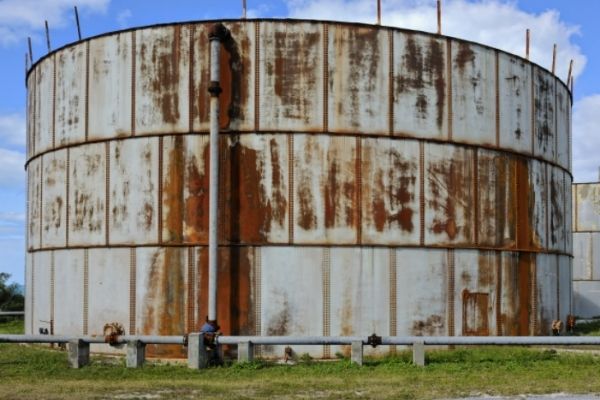
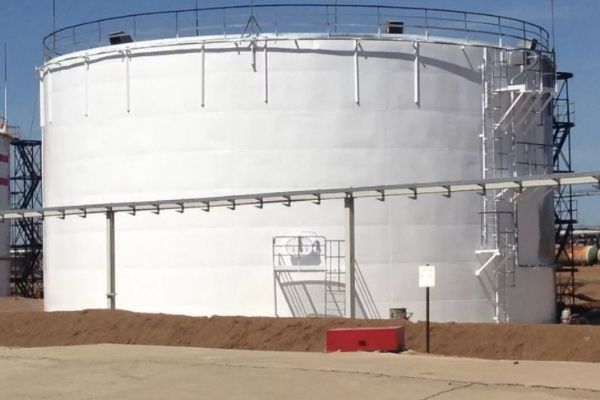
Modern construction uses paints that do not include additives, as well as materials containing powders of non-oxidizable metals, such as, for example, aluminum, magnesium, and zinc. Some paints also include acrylic or polymer compounds, due to which a thick coating is formed on the metal surface, affecting both the protection of the material from moisture and its appearance.
You can read more about polyurethane waterproofing in the article – Polyurethane waterproofing.
Pasting and surfaced roll materials
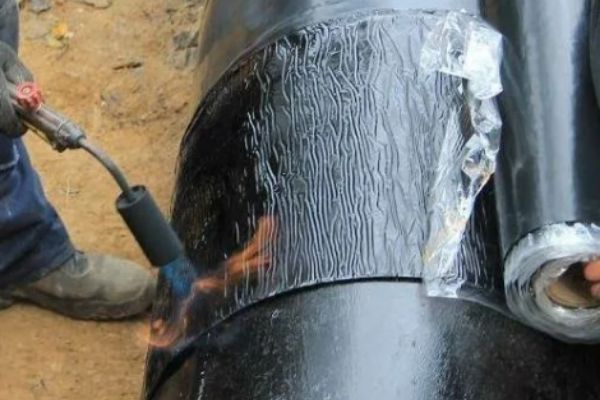
Pasting is carried out by attaching a polymer roll material to the metal structure. The binding of metal and waterproofing cloths occurs by heating the latter or using special adhesive compositions.
You can read more about roll waterproofing in the article –Roll waterproofing installation with detailed instructions for its installation.
Recommendations for the choice of material
When choosing a material, it is necessary to understand carefully to where you will apply it exactly. As an example, for waterproofing a roof, it is necessary to select waterproofing that is resistant to ultraviolet solar radiation.
The choice of a suitable waterproofing material depends on several important factors:
- The type of structure or construct – Tank, roof, pipe or other type of metal structure;
- Location – Underground or above ground;
- Exposure to Uv radiation – mainly relevant for metal roofs;
- Type of exposure to metal – Chemicals, industrial water, drinking water and other compounds;
- Constructive – The presence of seams and joints;
- Dynamics – Dynamic load;
- What kind of coating will the made waterproofing serve as – a finishing base or an intermediate one (in the thickness of a certain structural layers).
In most cases it is recommended to use materials with the following qualities for the installation of high-quality waterproofing of metal:
- No seams
- 100% adhesion to the metal base;
- High coefficient of elasticity;
- Resistance to mechanical loads.
As a rule, polyurethane waterproofing materials have such properties.
Prices for the performance of works on waterproofing of metal structures
The prices listed below may change, as the price depends, among other things, on the complexity of the work, the material used, and other nuances and features of a particular project.
| Description of work | Unit of measurement | Price in $ |
| Preparation of the metal base | m2 | starting from 3 |
| Primer of the base | m2 | starting from 5 |
| Application of liquid rubber | m2 | starting from 18 |
| Waterproofing with polyurethane | m2 | starting from 40 |
| Application of UV-resistant coating | m2 | starting from 18 |
| Sealing of seams and joints with a special waterproofing tape | running meter | starting from 22 |
| Tightening and replacement of fasteners | m2 | starting from 18 |
| Replacement and reconstruction of metal tiles | m2 | starting from 22 |
| Replacement and reconstruction of sheet metal | m2 | starting from 22 |
| Replacement and reconstruction of metal with a folding lock | m2 | starting from 33 |
| Thermal insulation arrangement | m2 | starting from 10 |
Online-Waterproofing Cost Calculator
Calculation of waterproofing cost
The total cost of waterproofing
Order work on applying waterproofing to metal
You can place an order for work on applying waterproofing to metal in our company.
To determine accurately the necessary waterproofing material and waterproofing method that is suitable for your design, it is recommended to consult with your own engineer.
1. Call us by the phone number indicated in the contacts;
2. Order a free estimate based on the volumes you have;
3. Order the departure of an engineer for consultation, measurements and preparation of technical specifications to obtain a final estimate;
4. A contract is signed in which all the terms of cooperation and warranty obligations are spelled out.
Important: it is necessary to approach the issue of choosing an organization that will carry out waterproofing on metal with great attention. After all, the quality of metal processing directly depends on how long it will serve you.









